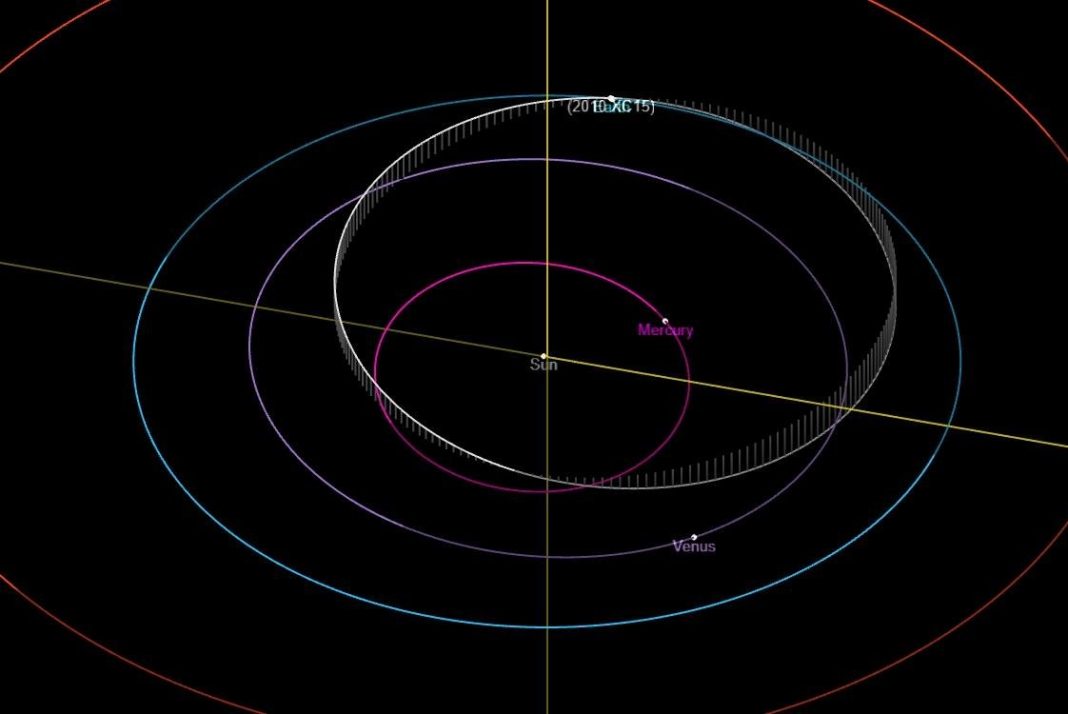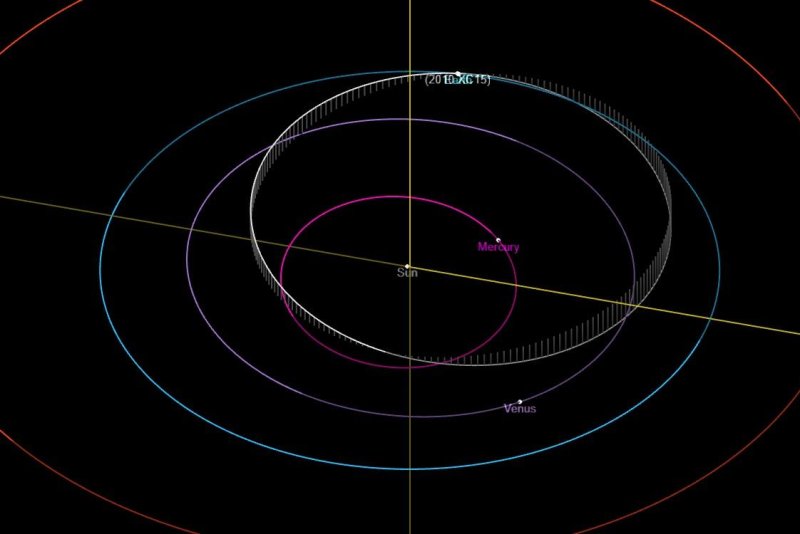Dec. 27 (UPI) — Researchers are preparing for a potentially “catastrophic” close encounter with an asteroid in 2029 by scanning an asteroid with radio waves on Tuesday.
NASA is teaming with scientists from the University of Alaska Fairbanks’ Geophysical Institute to send about 9.6 million radio waves to 2010 XC15, an asteroid that will pass by about twice the distance from Earth to the Moon.
The asteroid is estimated to be about 500 feet wide. Long wavelength radio waves will be transmitted from the High-frequency Active Auroral Research Program research site in Gakona. The HAARP program has never been used to probe an asteroid before.
Researchers hope to learn more about the interior of the asteroid, giving them a better idea of how they could redirect an asteroid should it be on a collision course with Earth.
“If you know the distribution of mass, you can make an impactor more effective, because you’ll know where to hit the asteroid a little better,” said Mark Haynes, lead investigator on the project and a radar systems engineer at NASA’s Jet Propulsion Laboratory in Southern California.
“Longer wavelengths can penetrate the interior of an object much better than the radio wavelengths used for communication.”
If Tuesday’s transmission is effective it may prove to be a useful method in 2029 when the asteroid Apophis passes within 20,000 miles from Earth, about 10 times closer than the Moon.
Apophis was discovered in 2004, and was quickly determined to be one of the most “hazardous” asteroids with the potential to strike Earth. It is more than twice the size of 2010 XC15 and while it is not projected to hit Earth, scientists want to be prepared.
“The more time there is before a potential impact, the more options there are to try to deflect it,” Haynes said.
NASA deflected its first asteroid in September, in the Double Asteroid Redirection Test mission.
The Planetary Society, an international nonprofit organization based in California, estimates that if Apophis collided with Earth, it would cause widespread damage “up to several hundred of kilometers from its impact site,” unleashing an energy output equal to “1,000 megatons of TNT, or tens to hundreds of nuclear weapons.”

